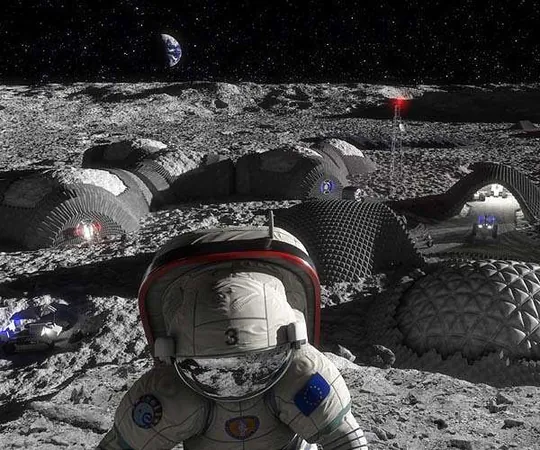
Unleashing 3D Printing: The Future of Construction on the Moon and Mars
2025-05-14
Author: Yu
NASA's Bold New Frontier in Construction Technology
In a groundbreaking move, NASA is reshaping the future of interplanetary exploration with cutting-edge construction technologies aimed at building habitats on the Moon and Mars. The agency's ambitious Moon to Mars Planetary Autonomous Construction Technology (MMPACT) project is pushing for in-situ resource utilization, which means utilizing local materials instead of relying on expensive supplies from Earth.
Robotic 3D Printing: Building the Future with Local Resources
The MMPACT initiative is leading the charge, focusing on robotic 3D printing to create essential structures using materials found directly on the Moon and Mars. Imagine constructing habitats, landing pads, and even radiation shields from the very soil beneath your feet—literally! This revolutionary method could drastically cut down both launch costs and the weight of supplies transported from Earth.
Innovative Techniques Changing the Game
At the heart of this effort lies the use of simulated lunar and Martian regolith combined with binding agents like water, which leaves the potential for on-site extraction. Innovator Dr. Behrokh Khoshnevis from the University of Southern California has been pivotal in this field, developing the Contour Crafting technique. This process allows for the layer-by-layer extrusion of molten regolith to produce robust, monolithic structures on a grand scale.
Precision Meets Flexibility in Space Printing
Khoshnevis isn't stopping there; his advancements in selective separation sintering enable the creation of intricate parts, such as interlocking tiles, that are vital for spacecraft and habitats. This process is adaptable, functioning efficiently in both planetary gravities and the microgravity of space stations, ensuring versatility for a range of missions.
Groundbreaking Developments on Earth and Beyond
Meanwhile, Texas-based company ICON is taking NASA's innovations and applying them to Earthly construction. They made waves in 2021 by unveiling the Mars Dune Alpha, a 1,700 square-foot habitat prototype located at NASA's Johnson Space Center. This mock-up serves not only as a habitat but also as a key part of NASA's Crew Health and Performance Exploration Analog program that aims to evaluate life on other planets.
The Race for Moon and Mars Construction Continues
ICON is also in the process of developing the Olympus construction system, which will harness local Moon and Mars materials. By employing high-powered lasers in a technique known as Laser Vitreous Multi-material Transformation, they’re melting regolith into durable, ceramic-like formations. A recent test aboard a Blue Origin suborbital flight in February 2025 compared the behavior of simulated lunar regolith to real lunar samples from the Apollo missions, aiming to refine their approach.
A Sustainable Future Awaits!
As NASA ramps up these innovative technologies, the overarching goal remains clear: to establish a sustainable human presence on celestial bodies while simultaneously revolutionizing construction practices here on Earth. The possibilities are endless as we stand on the brink of a new era in interplanetary exploration!


 Brasil (PT)
Brasil (PT)
 Canada (EN)
Canada (EN)
 Chile (ES)
Chile (ES)
 Česko (CS)
Česko (CS)
 대한민국 (KO)
대한민국 (KO)
 España (ES)
España (ES)
 France (FR)
France (FR)
 Hong Kong (EN)
Hong Kong (EN)
 Italia (IT)
Italia (IT)
 日本 (JA)
日本 (JA)
 Magyarország (HU)
Magyarország (HU)
 Norge (NO)
Norge (NO)
 Polska (PL)
Polska (PL)
 Schweiz (DE)
Schweiz (DE)
 Singapore (EN)
Singapore (EN)
 Sverige (SV)
Sverige (SV)
 Suomi (FI)
Suomi (FI)
 Türkiye (TR)
Türkiye (TR)
 الإمارات العربية المتحدة (AR)
الإمارات العربية المتحدة (AR)